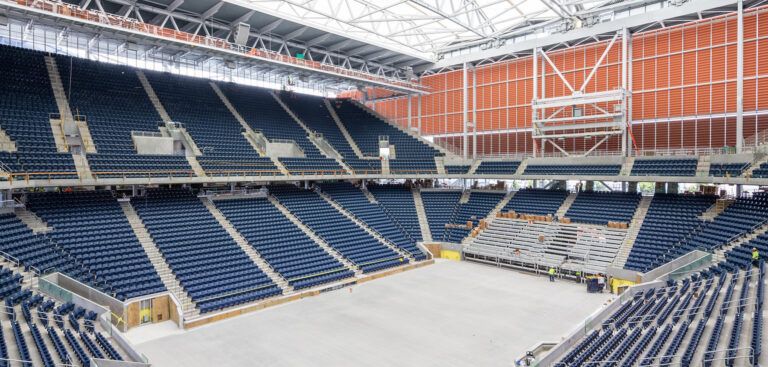Matt Rossetti, president of Rossetti, explains how the design of the new Louis Armstrong Stadium transforms the USTA Billie Jean King National Tennis Center (NTC) and helps the US Open to create an entertainment spectacle
The architecture of a sporting structure does not exist on its own – rather, it is intimately connected to and influenced by external social, market and fiscal forces. Because of this, stadium architects must focus on broader, more experiential playing fields that evoke a sense of belonging and participation within every individual who enters. In this way, the spirit of the structure informs the emotion of the event.
In 2010, Rossetti partnered with the United States Tennis Association (USTA) to reimagine the campus of the Billie Jean King National Tennis Center in New York City and embark on a nine-year Vision Plan, which would rebrand the NTC and transform it into an entertainment district to match that offered by the Olympic Games.
The US Open as an entertainment spectacle became the guiding principle to inform the design, integrate sponsor partnerships, improve fan experience, and differentiate the event and venue from competitors. Rossetti’s goal was also to maintain the history of the event and to enable fans to have an intimate tennis experience.
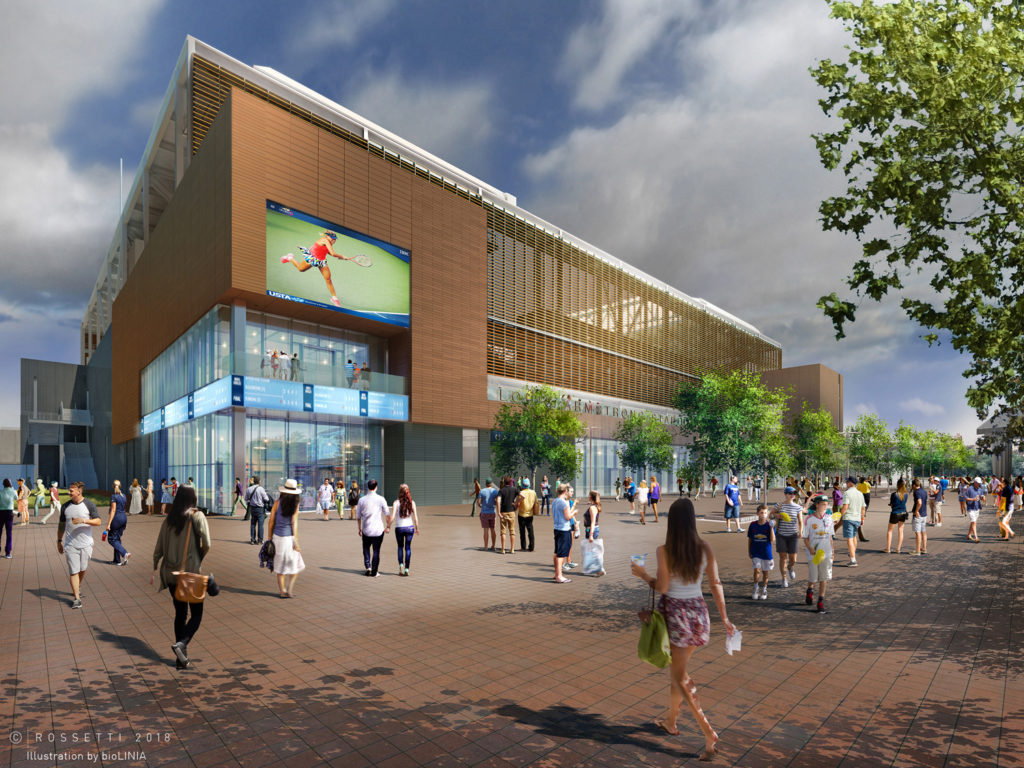 While the Louis Armstrong Stadium is typically a secondary venue for the US Open, you wouldn’t be able to tell from stepping inside. From the micro-level of the architectural detail to the grand scale of innovation, guests are able to experience the maximum level of grandeur and prestige one typically associates with the Grand Slam tournaments.
While the Louis Armstrong Stadium is typically a secondary venue for the US Open, you wouldn’t be able to tell from stepping inside. From the micro-level of the architectural detail to the grand scale of innovation, guests are able to experience the maximum level of grandeur and prestige one typically associates with the Grand Slam tournaments.
On the visual side, the Louis Armstrong Stadium’s façade is adorned with 14,250 terracotta louvers, which enable airflow through the upper part of the building, as well as offering protection from rain, and shade from the sun. The terracotta material was ultimately chosen – after multiple studies, computational models and wind tunnel tests – to capture the tradition of brick buildings in other areas of the historic campus, with a contextual reference to buildings in Manhattan. If laid end-to-end, the louvers would span 13.5 miles— longer than the island of Manhattan.
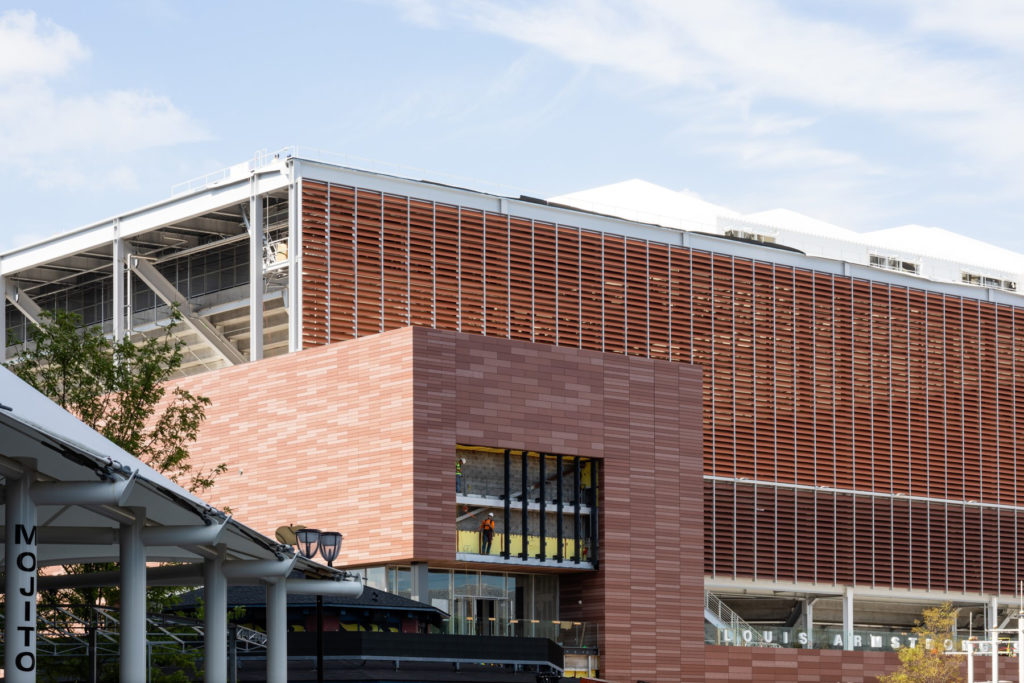 On the functional side, nine advanced 3D modeling tools were used to design the stadium, and dozens of weather, airflow, wind and sun studies were analyzed. Armstrong features a perforated 14,069-seat bowl that allows air to pass through underground pathways and into the lowermost seating. A retractable roof – equal in length to seven Olympic-sized swimming pools, and the second at the NTC alongside the Arthur Ashe Stadium – means the USTA can host matches in an open, day-lit outdoor environment and provide weather protection. This exclusive design makes Louis Armstrong Stadium the world’s first naturally ventilated tennis stadium with a retractable roof.
On the functional side, nine advanced 3D modeling tools were used to design the stadium, and dozens of weather, airflow, wind and sun studies were analyzed. Armstrong features a perforated 14,069-seat bowl that allows air to pass through underground pathways and into the lowermost seating. A retractable roof – equal in length to seven Olympic-sized swimming pools, and the second at the NTC alongside the Arthur Ashe Stadium – means the USTA can host matches in an open, day-lit outdoor environment and provide weather protection. This exclusive design makes Louis Armstrong Stadium the world’s first naturally ventilated tennis stadium with a retractable roof.
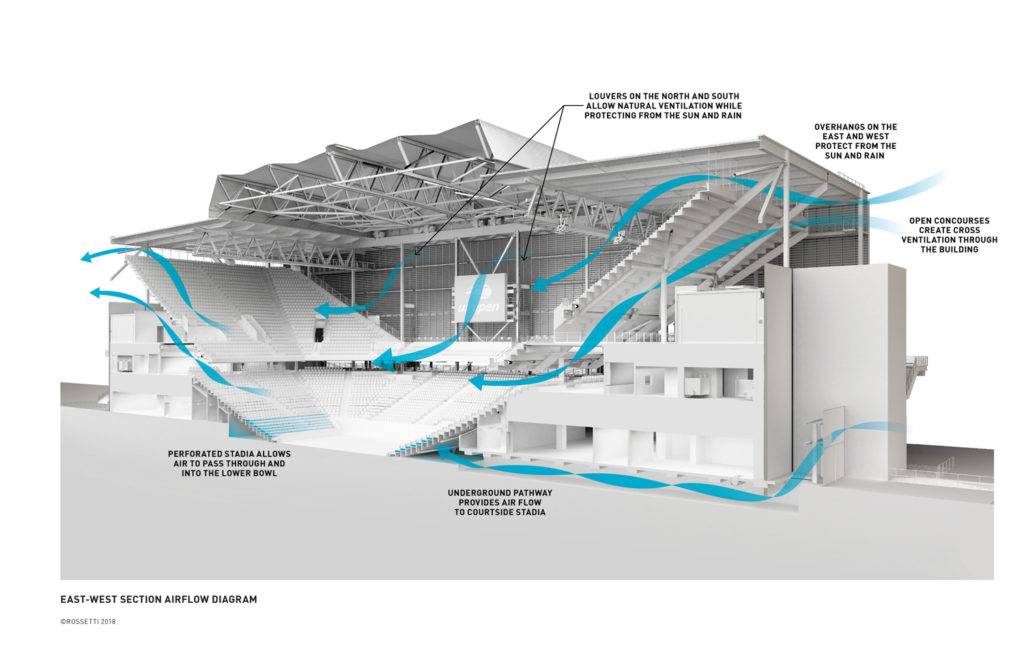
Additional design elements include three large, high-definition video display boards – one on the exterior and two inside – and 120 LED sports lights which illuminate the roof. The 2,380 aisle steps throughout the stadium, stacked up, would reach higher than the top of One World Trade Center. Escalators incorporated into the design provide attendees with a variety of vertical transportation options.
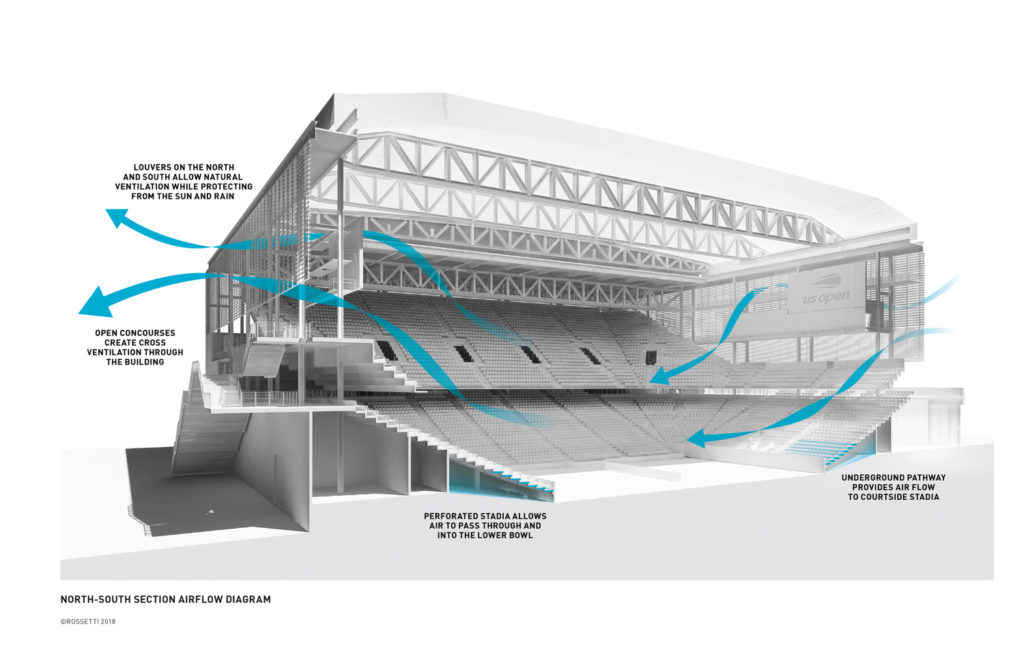
The innovative form and function applied to Louis Armstrong Stadium combine to create an outstanding and extraordinary sensory experience for players and spectators alike, where world-class hospitality, entertainment, shopping and dining options come together to create a guest experience that is truly curated and personalized.
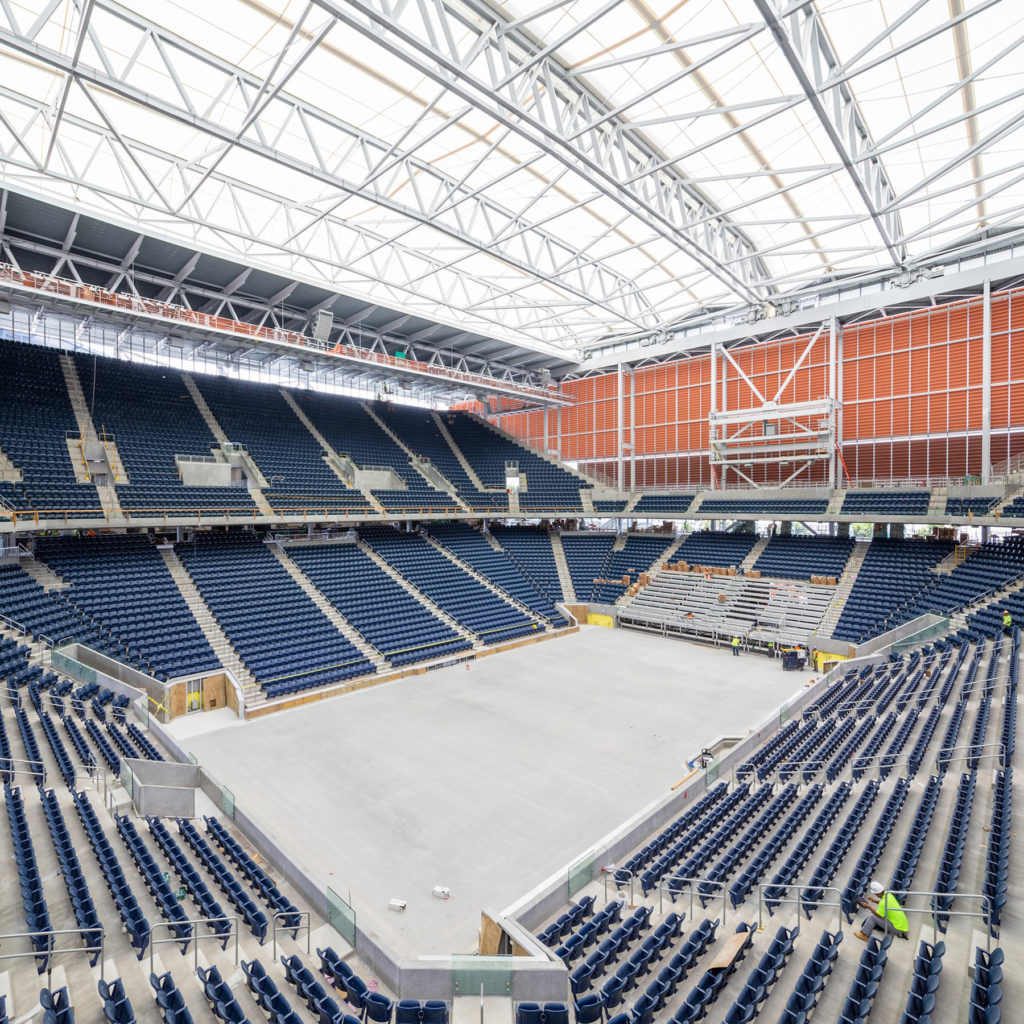
While the Billie Jean King National Tennis Center has always served as an emblem for professional tennis, the decade-long reimagining of the campus and its facilities will serve as a beacon of inspiration and creativity for future stadium design, while extending the US Open’s reputation as one of the world’s greatest tennis events.

Matt Rossetti is president of Rossetti, one of the world’s leading sports and entertainment architecture firms. Sports projects recently completed include renovations of Ford Field, in Detroit, Michigan, and CenturyLink Field, in Seattle, Washington.


